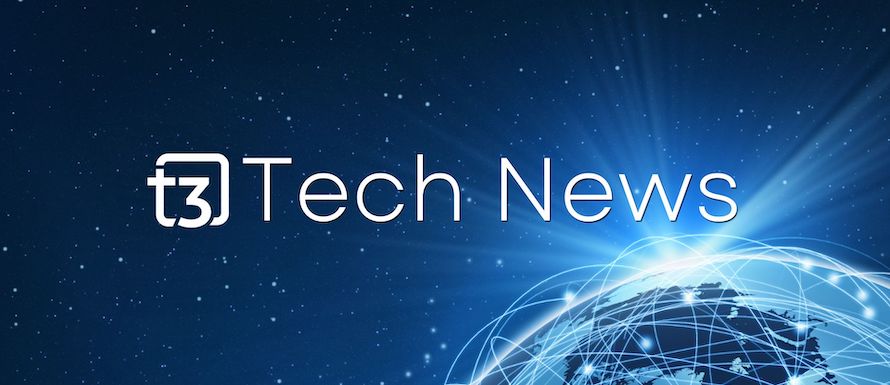Fidelity Adds New Self-Service Capabilities In Its Open Architecture Digital Store, Integration Xchange
Fidelity Adds New Self-Service Capabilities In Its Open Architecture Digital Store, Integration Xchange
Fidelity® today announced that Integration Xchange, the company’s award-winning open architecture digital store, is rolling out self-service functionality to make it easier for wealth management firms to test, deploy and manage technology platforms that meet their distinct business needs. With Integration Xchange, firms can explore a wide range of integration options in a single location to develop custom technology platforms that help them streamline business processes and workflows.
Fidelity continues to expand and enhance its Integration Xchange digital store, which includes access to more than 175 third-party tools and integrations including APIs, data feeds, single sign-on, real time alerts, Financial Information eXchange (FIX®) trading connectivity and more. The new self-service features will help firms engage with and manage the integration of new tools, including a robust test experience.
“We’re committed to helping firms find the appropriate technology for their advisors and investors, and that’s why we offer a broad range of building blocks for their platforms as well as the resources to understand how they can fit together,” said Lisa Burns, head of Platform Technology, Fidelity Institutional. “Our clients have been successfully using Integration Xchange to design and build their platforms, and the new self-service functionality takes it a step further by making it easier for firms to manage their end-to-end technology ecosystems on their own.”
New Capabilities to Help Firms Test, Deploy and Manage Integrations
Fidelity has started rolling out a new test experience that will allow firms and third-parties to understand how an API integration will fit within the context of their own platforms. Within the store, firms will have the ability to “try it out” and test a prototype of the integration before moving forward with the full build.
Fidelity has also improved its capabilities to quickly generate sample code for firms to test integrations on their platforms, reducing the process from days to minutes. These enhancements were designed to help firms test and deploy integrations more seamlessly.
To support firms after integration Fidelity is adding new functionality to help them with operational oversite and control of their technology ecosystem, including tools to help firms proactively manage their secure connections with Fidelity, as well as more easily understand their vendor connections and where data is being sent on their behalf.
“We’re always looking for ways to make things easier for our clients, and these new capabilities help firms simplify the end-to-end process from discovery through development and ongoing oversite,” said Burns.
Fidelity Continues to Add to and Enhance its Third-Party Marketplace
Fidelity continues to expand both the number of third-parties available in Integration Xchange, as well as the depth of integrations for CRM, financial planning, analytics, portfolio management, office tools and more.
Laser App, Riskalyze, Tamarac and Wealthbox® are among the third-parties with new or enhanced integrations:
- Deeper integrations with Tamarac, a web-based solution for portfolio rebalancing, performance reporting and CRM, will now allow for single sign-on and integrated account opening workflows. Easy account document retrieval will help deliver a streamlined, user-friendly advisor experience to access Fidelity account statements, confirms and tax forms via the Tamarac platform.
- The Wealthbox integration, a web-and-mobile CRM application for financial advisors, will expand its single sign-on and introduce account opening capabilities.
- Integration with Riskalyze, a platform that analyzes investment risk and helps build investment portfolios, will be expanded to include account opening and the first custodial transfer of asset (TOA) integrations.
- Laser App, an iPipeline product which provides forms-filling technology, will be added to the digital store. It will offer account opening and TOA functionality.
Integration Xchange now links directly to eMoney Advisor’s recently launched API storefront, eMoney Access. The storefront provides firms access to planning, client fact data, document storage and other features found within the eMoney platform. This integration will provide a streamlined solution for firms looking to build seamless experiences across eMoney and Fidelity.
Focus on Innovation and Meeting Client Needs
Fidelity is deeply committed to open architecture and offering flexibility to clients. Approximately 90% of Fidelity Clearing & Custody Solutions clients currently leverage one or more of Fidelity’s integrations with third-party vendors.
Integration Xchange launched in October 2018 to help make it easier for firms to understand and navigate the range of available integrations. Fidelity consultants work with firms interested in building customized solutions during the design and development process to support their implementations. Integration Xchange also received the 2019 WealthMangement.com Industry Award for Custodian Technology.
Fidelity invests in its technology enterprise-wide, leveraging its scale to develop new capabilities and enhancements that help meet the distinct needs of each of its customers. To support the evolving needs of wealth management firms, Fidelity will continue to look for opportunities to grow the platform with new integration solutions and help make it easier for firms to work both with Fidelity and on their own, as well as continuously experimenting with technologies that simplify and enhance the client experience.
ABOUT FIDELITY INVESTMENTS
Fidelity’s mission is to inspire better futures and deliver better outcomes for the customers and businesses we serve. With assets under administration of $8.3 trillion, including discretionary assets of $3.2 trillion as of December 31, 2019, we focus on meeting the unique needs of a diverse set of customers: helping more than 30 million people invest their own life savings, 22,000 businesses manage employee benefit programs, as well as providing more than 13,500 financial advisory firms with investment and technology solutions to invest their own clients’ money. Privately held for more than 70 years, Fidelity employs more than 40,000 associates who are focused on the long-term success of our customers. For more information about Fidelity Investments, visit https://www.fidelity.com.

